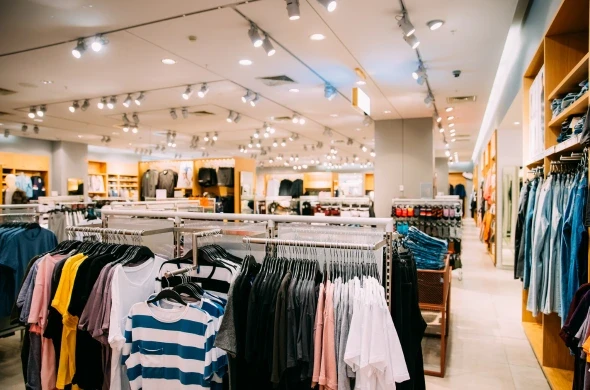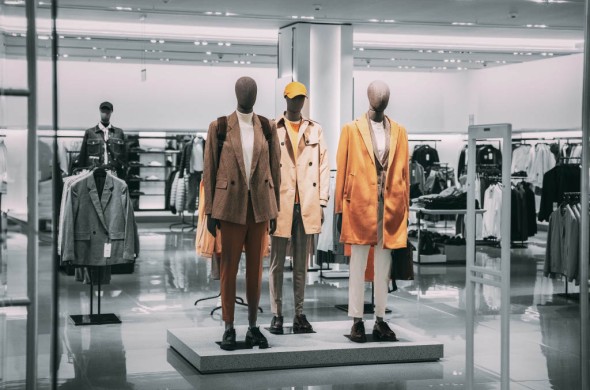During 2020, as much of the world shut down and stayed lockdown in their homes, the retail industry was turned entirely upside down. Many retailers that were already standing on shaky ground as they failed to innovate and meet their customers growing digital demands were the hardest hit. In the United States, more than 49 retailers including long-standing brands such as Neiman Marcus and Brooks Brothers filed for bankruptcy, according to S&P Global Market Intelligence. This was the largest number of filings since the financial crisis of 2009.
In October of 2020, the IMF (International Monetary Fund) published a Global Financial Stability Report stating that an increase in net borrowing by corporations greatly impacted by the pandemic temporarily helped to reduce financial pressures. However, that temporary fix to prevent defaulting on loan payments in the short term, could cause medium solvency issues.
The industries that were affected greatly by pandemic and as such have seen higher default rates include air travel, hospitality, energy and of course retail.
Changing Consumer Behaviors Create an Opportunity
Now, a year later, as the world ventures out of their homes again with a strong desire to step outside and shop and eat and enjoy the company of their loved ones, we are seeing a renewed hope for the future of retail. However, just like the shoppers have adapted and evolved over the past eighteen months, retailers and commercial real estate owners who have taken this time to rise to the challenge of meeting their customers’ changing needs are coming out on top.
In order to truly discuss how retailers and commercial real estate developers should adapt to the changing retail landscape, we need to first acknowledge some of the global trends that are at play. Shopping malls are no longer the primary place where people go to purchase what they want and need. The role that malls play in consumers daily lives has shifted to being a place where individuals are looking for in-person retail experiences where they can touch, smell, and feel products, discuss new items with a brand expert and socialize with their family and friends.
Certain Shopping Preferences will Likely Stick
One thing that hasn’t changed is that the mall is still the heart and soul for many communities around the world where you will still find a mother and daughter trying on dresses for a wedding, groups of teens getting together to eat lunch and socialize and an older couple walking around from shop to shop.
In some parts of the world, including Saudi Arabia, the outlook for the retail industry over the next few years looks promising, the Compound Annual Growth Rate (CAGR) is forecasted to be 4.5% between 2020 and 2025, reaching SAR 331.6 billion. Duty Free retail is projected to experience the greatest growth at 18.4% to reach annual revenue of around SAR 1.8 billion.
Leveraging Cross-shopping as a Differentiator
Shoppers value their time more than ever and prefer to conduct research online prior to making a purchase. Cross-selling is a way in which retailers have come out ahead by providing an online filter that shows customers which products are available in their local store for pick up today. Customers are in favor of this as they are able to reserve the item they want and then head to the store and pick it up. The big winner in this scenario is the retailer as they beat out other online retailers by being able to provide the immediacy the customer wants when it comes to picking up their purchase that day but are also seeing in-store sales increase as shoppers are lured to make impulse purchases once they arrive.
Understanding Online and Offline Behavior Changes Across Geographies
The online shopping revolution has hit the world by storm and it is never going to leave us. It provides an environment where shoppers can search products from around the world, compare items, price check, read reviews and make incredibly informed decisions. However, malls and traditional retail do not need to try to compete with online retail, they should view the digital landscape as a new way to engage with their consumers and deeper their existing bonds. Social media marketing is a great way to accomplish that by creating engaging content that resonates with your target consumer and providing a platform with which they can share their feedback on the items you feature. Retailers can also see which new products generated the most online buzz in a particular geographic area and utilize that data to adjust inventory levels at retail.
Location-based advertising through mobile apps is another great way for retailers to engage with their consumers online in order to drive in-store sales. By showcasing a new product or limited time offer through a mobile ad, you can utilize device ids to track the efficacy of those ads and see just how many consumers not only saw your ad, but entered your store and ultimately made a purchase.
Creating Value by Innovating Together
Ask any retail expert and they will tell you that innovation has become the biggest differentiator between the malls that attract residents and tourist and those that consumers avoid. By innovating, a mall doesn’t feel the impact as greatly when one of its major anchors moves out because they have more than enough tenants wanting to move into that location. By adding open air amphitheaters, spas, fitness clubs, farmer’s markets and activities for the whole family, there is a continuous draw to the mall which in turn results in greater retail sales for everyone. In Madrid, Xanadu offers balloon rides; in Dubai, Mall of the Emirates offers a ski slope, while Dubai Mall offers an aquarium where you can dive; in Minnesota, the Mall of America has a dinosaur museum.
Innovation doesn’t just have to include additional forms of entertainment to draw a crowd, it can also be new ways in which a mall caters to its various consumer groups. The Dubai Mall has created an area called “Fashion Avenue” where upscale shoppers can find luxury brands and services to suit their every need and desire.
Reworking the Tenant Mix and Getting Creative with Leasing
Rethinking the traditional model of having all tenants sign a long-term lease provides shopping malls the option of being more flexible and taking advantage of temporary spaces. Keeping anchor tenants is key to driving traffic, but allowing for smaller, novelty stores, pop-up shops and seasonal kiosks allow for customers to discover something new when they come to the mall. This flexibility also allows malls to take greater risks than what they may have in the past when vetting new businesses. Working with a retail business consultant to explore new leasing options is crucial to future success.
Additionally, mixed use developments are becoming increasingly popular as they offer consumers a place to live, work and shop. Having a built-in consumer base for a mall is a great benefit and the alternate revenue streams can help any developer maximize the returns on invested capital.
Moving from landlord to partner
Looking at the success of many mixed-use developments, you will see that they are operated as a cohesive unit with retail, office and residential leaseholders being treated as partners. Through seasonal programming such as holiday events, concerts, etc., working as a collective provides for greater partnership and consumer engagement.
Leading to a Brighter Future
After the darkness and economic uncertainty of 2020 and 2021, the future of retail is bright. Real estate developers that have taken the time to fully understand the wants and needs of consumers are coming out ahead. Whether it be through a commitment to environmental sustainability through solar energy or creating on-site experiences that can be shared across social media platforms for the world to see, the potential is endless.
Retail Consulting Services
Ollen Group retail consulting services, include working closely with brands, retailers, and landlords offering turnkey solutions from strategy to execution, as well as design and supervision.
Read our latest insights, ideas, and perspectives that explore the trends shaping the future of business and society. Our consultancy services go hand-in-hand with these insights, confirming our position as industry leaders. Get in touch to find out more about our consulting services and industry expertise.



